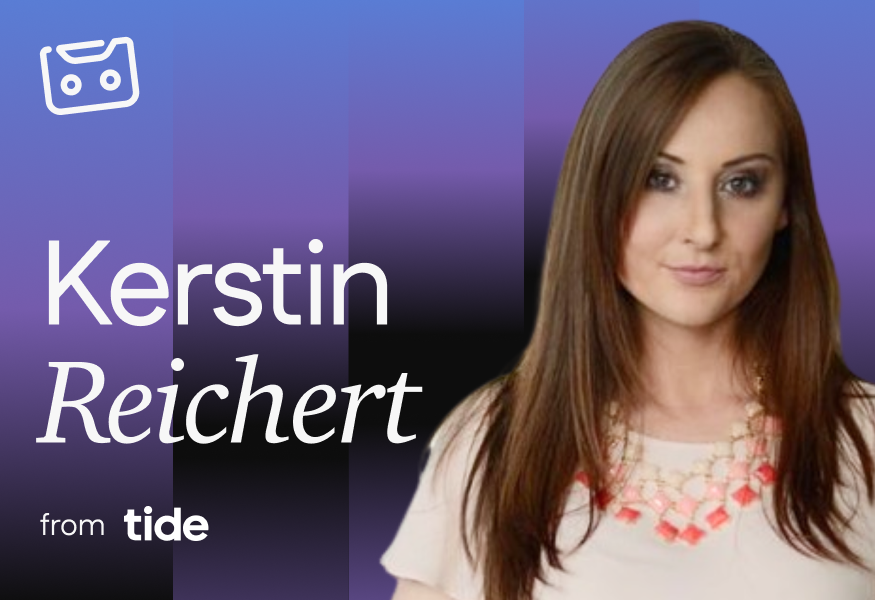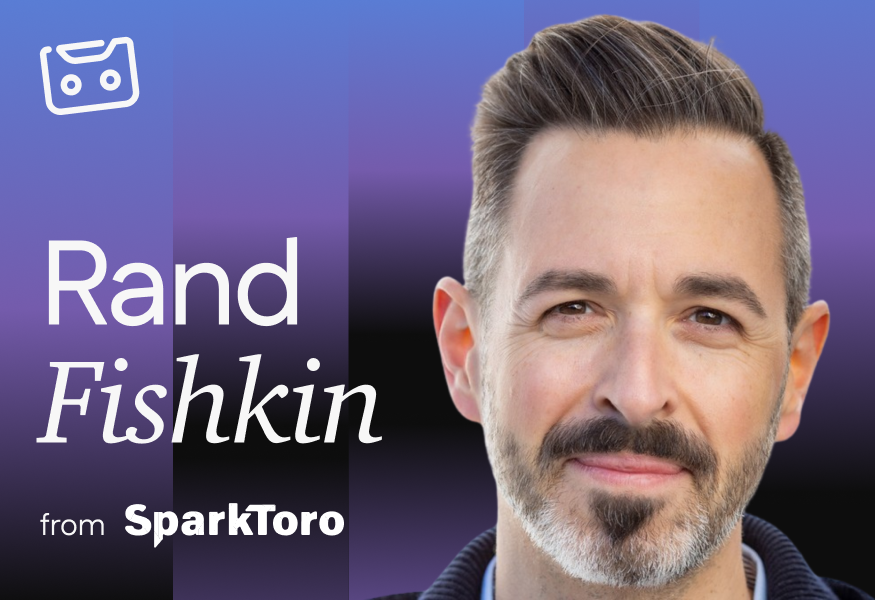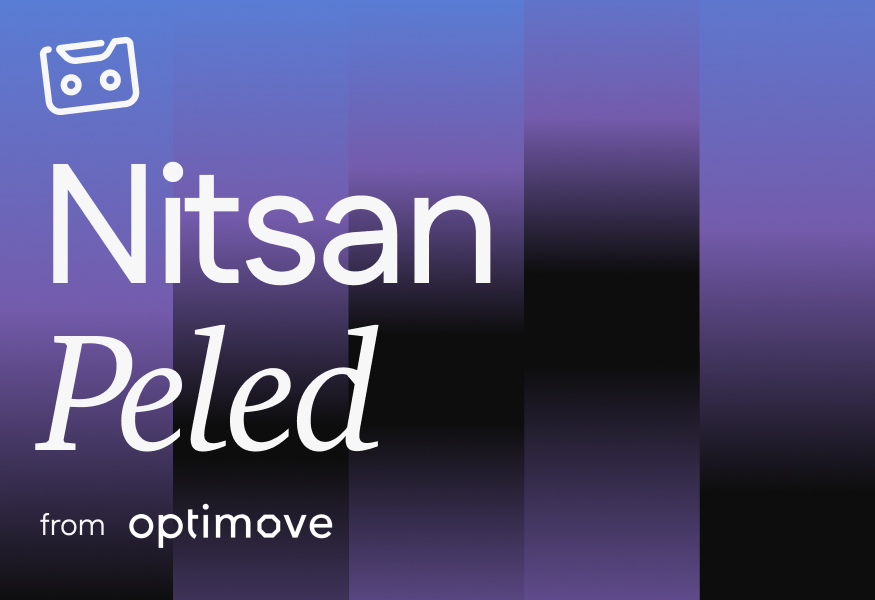I’m always intrigued by how smaller companies compete against so-called industry gatekeepers.
So I was excited when I heard that Tom was chatting to Tide’s Kerstin Reichert for Demandist.
Today, Tide is a company trusted by over 300,000 UK businesses. But back in 2015, it was a new startup entering a market dominated by some the biggest financial institutions in the world.
Of course, having a great product has helped them get to where they are now. Customer service plays a big part too. But so does content, and Tide’s blog is a gold mine for small business owners.
From practical things such as managing accounts and staying in HMRC’s good books, to creative topics like coming up with a brand name and running online marketing campaigns—everything is dedicated to helping people save time and money, which is what Tide is all about.
As SEO Digital Marketing Manager, Kerstin plays a central role in creating and putting this content out to the world.
In this post, you’ll get a peek behind the curtain of what content creation looks like at a fintech company. I say ‘peek’, we’ll open the curtain wide, with insight on creativity, aligning content with your mission, and focusing on what customers want.
Moving from a traditional bank to Fintech startup forces you to get creative
Before moving to Tide, Kerstin worked as the SEO Manager at TSB, where things moved at a slow pace and her team was given large budgets to spend however they saw fit (providing a campaign made it through several stages of approval).
Very different to life at a fintech startup, where the pace is rapid and resources are limited. But if there’s one thing to be said for startup mentality, it’s that it forces you to get creative.:
“You have very limited budgets, so you have to make sure you're on point. You have to make sure you get the most out of it.
“You also have the additional challenge, which you don't necessarily have when you come from a big established bank, that everything is new. Especially from an SEO point of view, right? So you're working with a new domain, there's basically no authority whatsoever. It's not a known brand.
“You have to figure out a way to build that authority, how to get out in the space and how to become a brand that Google will recognise as relevant for the products that you're offering.”
How do you build that authority?
Through engaging, informative, SEO-driven content. The kind of stuff that Google loves.
But knowing what you have to do and doing it are two different things. Fortunately, Kerstin has some thoughts on what great content looks like.
Content should align with your mission
If you visit the Tide website, you'll find that it has a ton of informative content divided into two types:
- Factual product pages that tell you about Tide’s various products and their features
- Editorial content and everything related to that: blog posts, videos and running events
While the two sides are different, content is united by Tide’s reason for existing:
“All of [our content] aligns with the overarching mission of Tide, which is saving time and money.
“In that regard [content is] saving your time by finding the information that you need, and hopefully, saving you money by finding the right information to help you save money as well. So it's very, very member-focused.”
For content to be meaningful and make an impact , it must support your mission.
It seems like an obvious thing. But so often companies fall into the trap of approaching content marketing like it’s an external platform; a separate entity that’s distinct from the mission.
To keep your content strategy tied to your reason for doing what you do, ask yourself:
- What is our brand mission?
- Who do we want to reach?
- What business goals will we address?
- What are our content objectives?
For Tide, the brand mission is to save entrepreneurs time and money. Its audience is small business owners. Its goal is to increase membership. And its content objectives are perfectly aligned with its mission: to help the audience save time and money.
It always comes back to the mission. The perfect circle.
Put customers at the centre of your content
When talking about aligning content with the mission, Kerstin dropped in a line that defines Tide’s true-north: “It's very, very member-focused.”
To me, this is what helps Tide stand out. Nothing is generic. Every piece of content addresses a problem or need.
As a user, if you’re going to commit to a product or service this is exactly what you want to see: content that speaks directly to you.
“It's all about our members, and even before they are members.
“We generally tend to look at: what do people look for? What do people research online? What is helpful? We speak to our support teams and say, ‘What questions do they ask? What do small businesses need help with?’ And we basically form our content strategy around that.”
On the product side, to make sure that content is generating organic traffic, Kerstin’s team works in tandem with other internal teams.
“We work very closely with our product teams and we get involved very early on. So when we know something is coming, a new product, that's when we as the marketing team start doing our research.
“Usually, even before the product is built we do research around what is already there in the market. And then me personally, I would think about, ‘Okay, what is this product and how does it help small business owners? Like what does it help with? And how do business owners search for that?’
“So, that could be the functionality of the product, but also it informs what the product name itself should be. So we can ensure that what we name things are actually what people are looking for [and] not something abstract.”
On the editorial side, the members themselves often provide the content. Tide’s Member Spotlight shares the stories of business owners in their own words. Kerstin’s team also produces webinars and masterclasses featuring member panels and uses real members in its advertising campaigns.
And taking a step back for a second, the fact that members are called members and not customers is a subtle but brilliant way of promoting community and inclusivity. Customers buy a product or service, but members are part of it.
By putting members front and centre, Tide shows its audience how people like them run their businesses with the help of Tide’s products.
And with word of mouth recommendations from family, friends and peers being the most trusted source of information about brands and services among consumers, there’s no better way to build trust than that.
Always create content that benefits the reader
That might seem like a glaringly marketing 101 thing to say. But in the same way that man cannot sometimes see the wood for the trees, glaring things can be overlooked.
As well as shining a light on members, Kerstin and her team focus on relevancy.
“Seasonality is very big because there are very important dates for business owners that they need to be aware of and their deadlines. So any information around that informs our content.
“Apart from seasonality, obviously, we look at where there is demand — what are people interested in? What are they looking for? And then we combine that with the products that we offer. So we look at which products are coming up [and] what is there to talk about and, basically, closely align the editorial content that we produce with our product offering.
“Because we want to give the best information we can to help business owners. But, of course, we also want to highlight Tide as something [that] can help save time and money and offer a solution.”
When covering topics that don’t sing to the heart of creatives, Kerstin looks for other ways to make content engaging.
“We like to incorporate what we call ‘expert insights’. So we do like to add, you know, knowledgeable quotes and thoughts from, it could be either our members that we work with who are very good at what they do and are very knowledgeable in a particular field that we might be writing about. Then we have our business partners.
We have a lot of accountancy firms, for example, that we're working with that help support our content creation with their knowledge. So they contribute to our ebooks or just articles we publish. Then also, just generally there are experts in the small business or business finance space that we can collaborate with.
“It's a nice combination of not just producing content, but also getting input from external people and featuring those insights as well.”
When learning about running a business, you want to hear it from a business owner. When learning about accounting, you want to hear it from an accountant.
And if you want to know if a service is worth using, you want to hear it from a member.
Promote the voices of those in the know and you’ll go a long way to building a loyal, sustained following.
Meet the makers
Maker Mixtapes is a podcast about the entrepreneurs, creators, and marketers building impressive things in their field. From content marketing to YouTube and growth, agency life to e-commerce and SaaS, this podcast aims to dissect and share lessons from their success.
Listen to Kerstin and other episodes from the brightest minds in tech and business on Spotify or Apple Podcasts.












